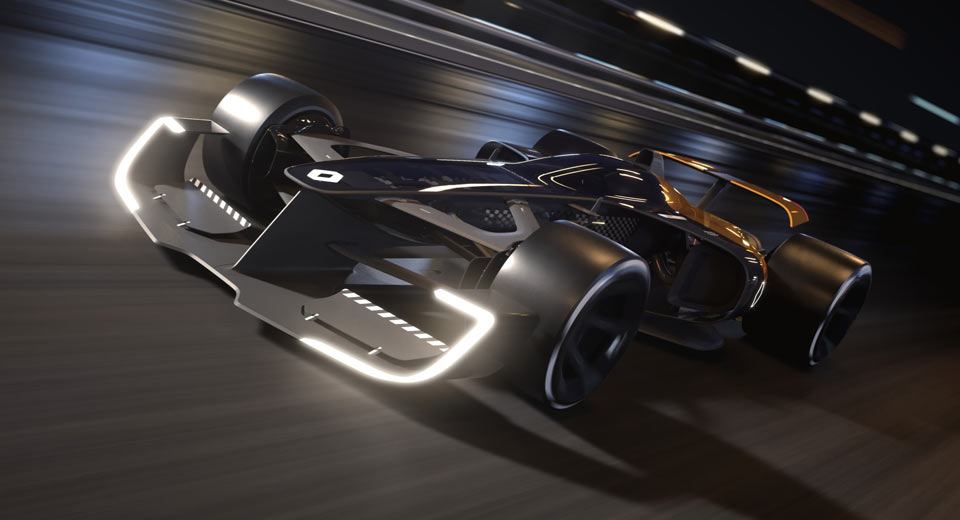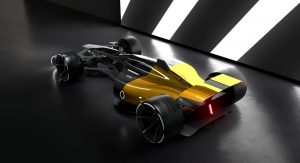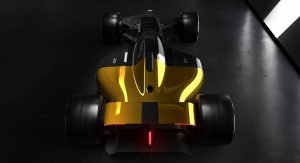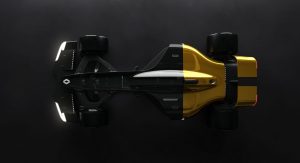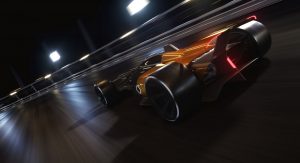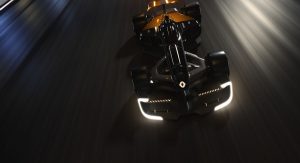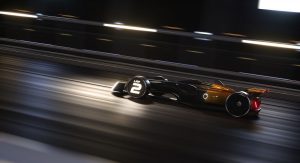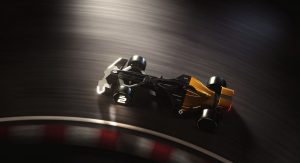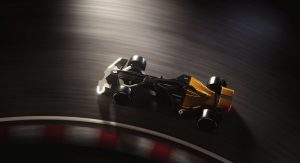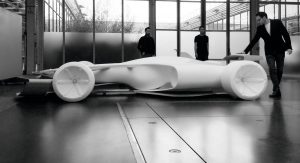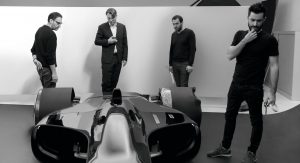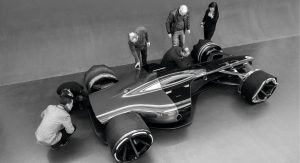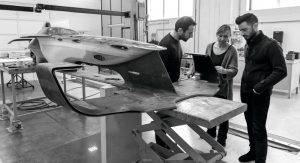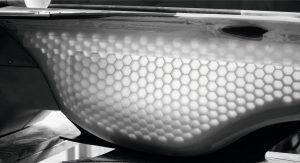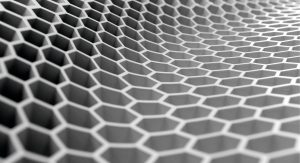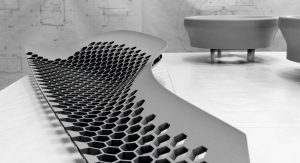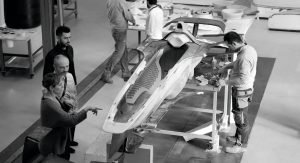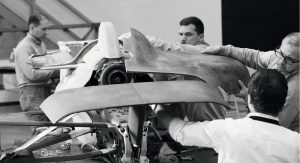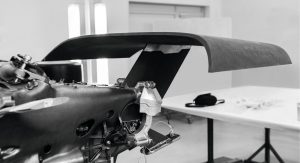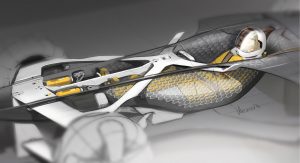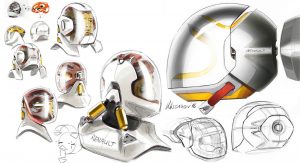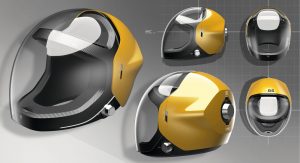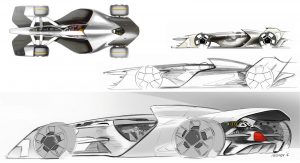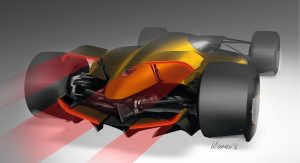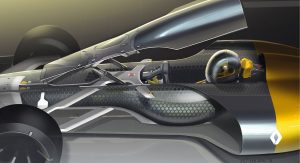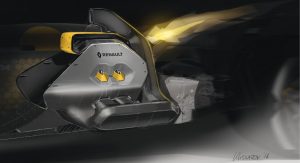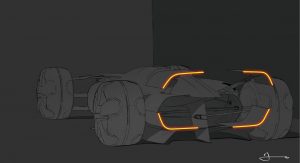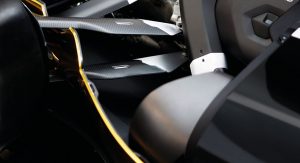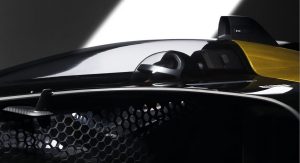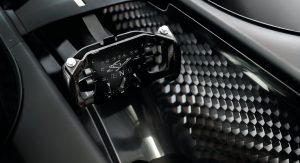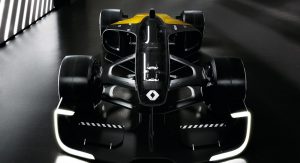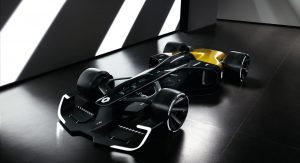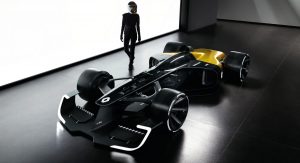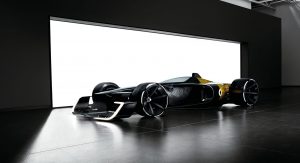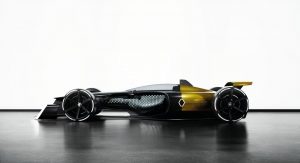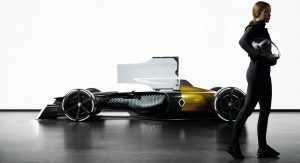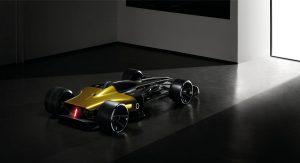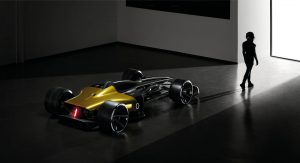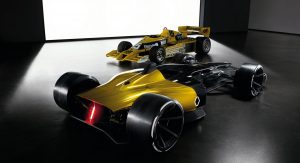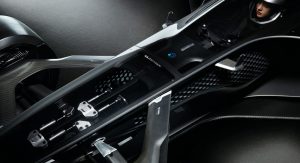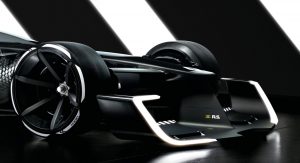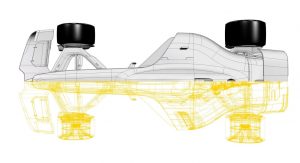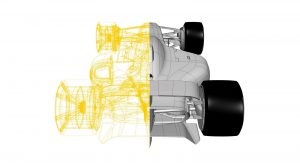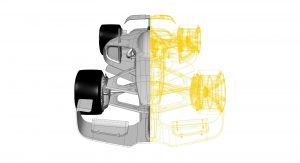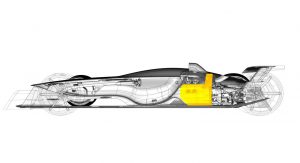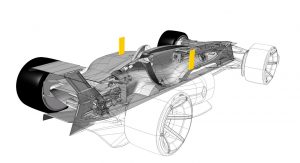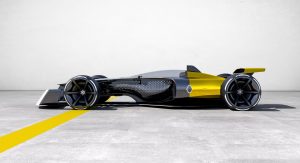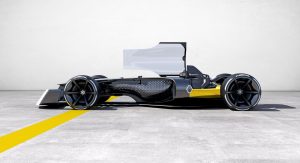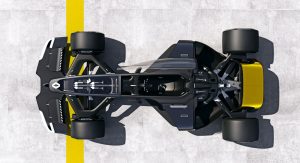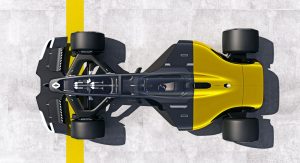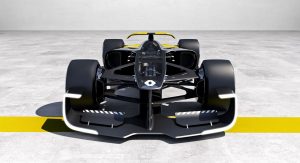Is this what F1 cars will look like in a decade? Well, Renault seems to think so, taking the wraps off the RS 2027 Vision concept at the Shanghai Auto Show.
The French brand has outfitted the RS 2027 Vision concept with a drivetrain that consists of a turbocharged V6 engine and a two-part kinetic energy recovery system that alone delivers 500 kW (670 hp). The V6 then increases total power to 1,341 hp (1 megawatt) while the incredibly minimalist body means the concept only weighs 600 kg. This results in a power-to-weight ratio of 2,235 kg/ton, about 1,000 hp/ton more than 2017-spec F1 cars.
Beyond its even more capable powertrain, the design of the RS 2027 Vision looks dramatically different to the F1 cars we are familiar with. Looking beyond the radical new aerodynamic elements, the biggest change is the implementation of a fully-enclosed cockpit not too dissimilar to the cockpit of a jet fighter. In the midst of ongoing debates about head protection in F1, this is one possible and rather radical solution.
Elsewhere, Renault has outfitted the RS 2027 Vision with autonomous driving modes which can be used during safety car periods to keep the car at a set speed. Additionally, the vehicle uses car-to-car communication that enables racers to track their rivals and more incredibly, could allow gamers to participate virtually in real-time F1 races.
The concept is also relatively friendly to the environment and is constructed from recycled materials that have been 3D printed.
According to managing director of Renault Sport Racing Cyril Abiteboul, “One role of Renault Sport Racing is to anticipate the future of Formula 1 so that it draws a maximum number of fans in an environment consistent with Groupe Renault’s objectives.
We look forward to generating inspired conversations with the racing community, fans and enthusiasts through this concept that highlights our ideas and desires.”



